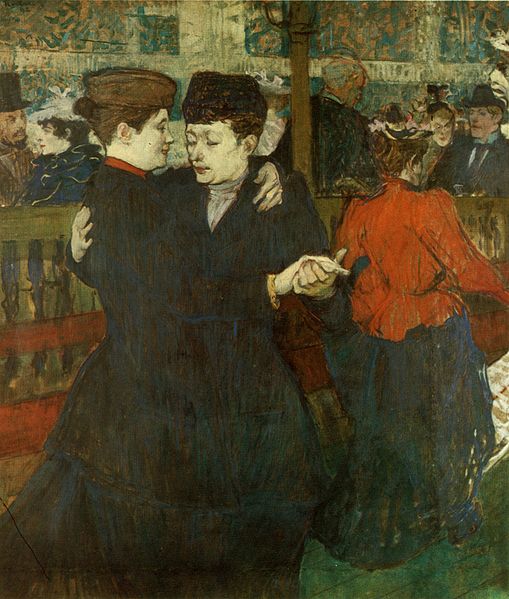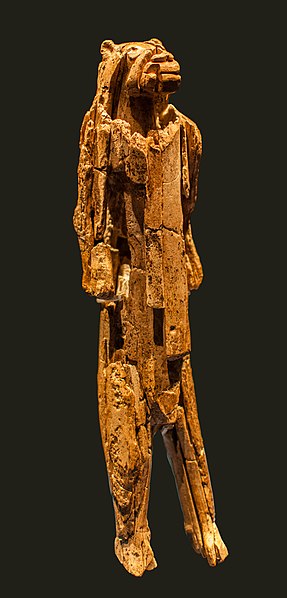Modern art includes artistic work produced during the period extending roughly from the 1860s to the 1970s, and denotes the styles and philosophies of the art produced during that era. The term is usually associated with art in which the traditions of the past have been thrown aside in a spirit of experimentation. Modern artists experimented with new ways of seeing and with fresh ideas about the nature of materials and functions of art. A tendency away from the narrative, which was characteristic of the traditional arts, toward abstraction is characteristic of much modern art. More recent artistic production is often called contemporary art or postmodern art.
Vincent van Gogh, Country Road in Provence by Night, 1889, May 1890, Kröller-Müller Museum
Paul Cézanne, The Large Bathers, 1898–1905
Henri de Toulouse-Lautrec, At the Moulin Rouge: Two Women Waltzing, 1892
Paul Gauguin, Spirit of the Dead Watching 1892, Albright-Knox Art Gallery
Art is a diverse range of human activity and its resulting product that involves creative or imaginative talent generally expressive of technical proficiency, beauty, emotional power, or conceptual ideas.
Clockwise from upper left: an 1887 self-portrait by Vincent van Gogh; a female ancestor figure by a Chokwe artist; detail from The Birth of Venus (c. 1484–1486) by Sandro Botticelli; and an Okinawan Shisa lion
20th-century bottle, Twa peoples, Rwanda. Artistic works may serve practical functions, in addition to their decorative value.
Back of a Renaissance oval basin or dish, in the Metropolitan Museum of Art
Löwenmensch figurine, Germany, between 35,000 and 41,000 years old. One of the oldest-known examples of an artistic representation and the oldest confirmed statue ever discovered.








